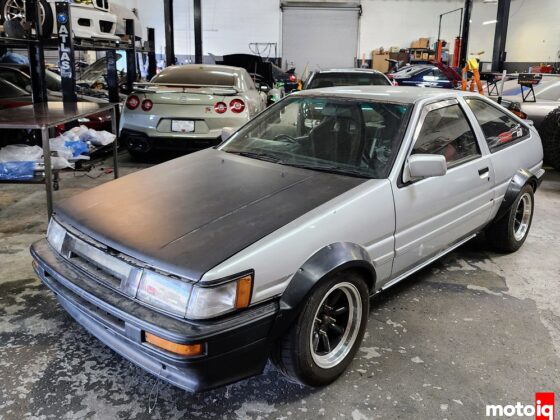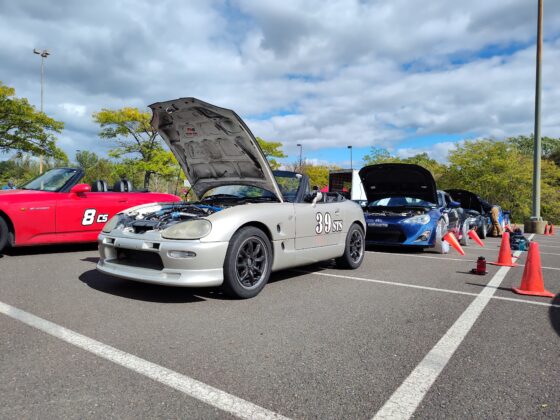
The caliper used was produced for Figs Engineering by Racing Brakes. It features 4 pistons and a strong 6061 alloy forged body for good stiffness and dimensional stability after multiple heat cycles. The gigantic caliper also has a durable and corrosion-resistant hard anodized finish.

The RB caliper has hard stainless steel abutments that keep the pad’s steel backing plate from digging into the aluminum caliper body causing inconsistent operation and damage to the body itself. Large anti-rattle clips put tension on the pads to reduce rattle and brake squeal.

The Figs kit comes with 7075 aluminum alloy radial mount adaptor brackets, the calipers are radial mounted to the adaptor bracket. Radial mounting has the advantage of putting the braking loads closer to the axis of the pads which reduces torsional twist in the caliper body which improves brake feel. You can see how much closer radial mounts can get to the mounting axis of the pads in this picture. We didn’t show it but the RB calipers also use vented stainless steel pistons with dust seals to help keep heat out of the caliper and the fluid. The vented stainless pistons transfer 90% less heat to the fluid compared to the more common aluminum piston. The RB caliper has bigger, taller pads than stock which greatly increases the pad volume and swept area increasing pad life. We are going to run the milder of the two different pad compounds that Figs offers. These pads have good bite, reasonable heat resistance, and low dust.

The Fig’s kit comes with DOT-approved braided steel brake lines. The lines do not expand with pressure like the stock rubber lines do and thus improve brake feel.




1 comment
It’s worth mentioning how improved towing performance will be now as, even with a weight distribution hitch, the rear will still take more of that weight than the front and cause the front to let go even sooner in a panic stop situation.